The arrangement and applicable, well-innovated selection of samples for testing are necessary to make a test dependable, unprejudiced, applicable, and meaningful. In any test, the selection of sample for testing is important. Generally, the quality of the samples used is more important than the content, but a reasonable minimum content of samples is necessary.
Table of Contents
What is a Sample?
The sample is a comparatively small portion selected from a population; a sample is the true population representative. There are many types of samples, such as random, biased, and numerical samples.
Random Sample: In the Random sampling method, every individual in the population has an equal chance of being included. The number in the sample must be sufficiently large to include all the variations of the individualities in the population.
Biased Sample: In the biased sampling method, the selection of an individual is influenced by factors rather than chance. Hence, a sample doesn’t truly represent the bulk. The cause of the bias may be the physical characteristics of the existent and its position to the person doing the slice.
Numerical Sample: A sample in which the proportion by many, say, long, medium & short fibers would be the same in the sample as in the population is called a numerical sample.
What is Sampling?
The process by which a sample is collected from a large number of materials is known as sampling. Sampling aims to produce an unbiased sample. This term is used in many fields.
Terms Used in Sampling
Some sample-related terms are used in sampling. Here they are:
- Consignment
- Test lot or batch
- Laboratory Sample
- Test Specimen
- Package
- Container/Case
Consignment: Consignment is the quantity of material delivered at the same time.
Test lot or batch: The test lot or batch consists of all the containers of textile material of one defined type and quality.
Laboratory Sample: A laboratory sample is the material that is used for measuring the laboratory. This is derived from the test lot.
Test Specimen: The test specimen is the one that is used for the individual measurement. This is derived from the laboratory sample.
Package: The package is an elementary unit (which can be unwound) within each container in the consignment. For example, Hanks, Bobbins, Skeins, Cones, etc., have been wound with silver roving or yarn.
Container/Case: The container is a shipping unit that is identified on the dispatch note. Example: Carton, Box, Bale.
Objective of Sampling
The main objectives of sampling in fiber and yarn testing are:
- To prevent the wastage of time.
- To reduce cost.
- To assure good quality.
- To know the perfect characteristics of the population.
- To avoid the dangerous nature of many tests.
- To increase the quality of population or raw materials.
- Due to the design nature of numerous tests.
- To assure good quality.
Types of Sampling Method
There are two types of sampling methods: random sampling method, biased sampling method, systematic sampling, cluster sampling, convenience sampling, and many more.
Random Sampling Method: In the Random sampling method, every individual in the population has an equal chance of being included. The number in the sample must be sufficiently large to include all the variations of the individualities in the population.
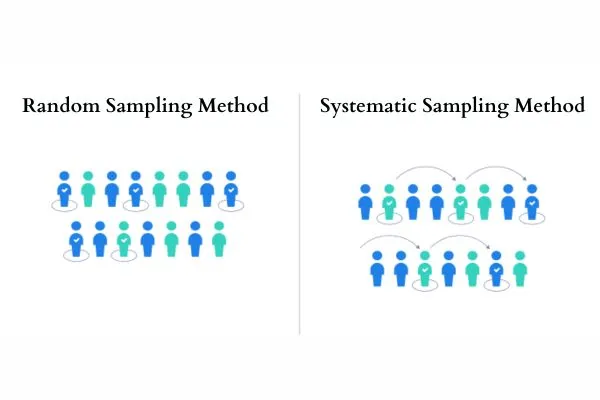
Biased Sampling Method: In a biased sampling method, the selection of an individual is influenced by factors rather than chance. Hence, a sample doesn’t truly represent the bulk. The cause of the bias may be the physical characteristics of the existent and its position with the person doing the slice.
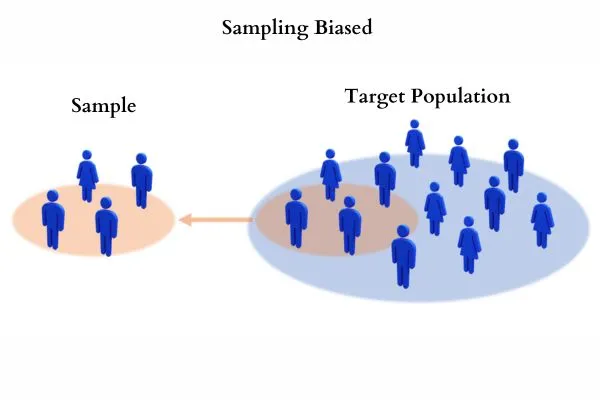
Systematic Sampling Method: Systematic sampling involves opting for every kth element from a list after aimlessly opting for a starting point. This system is effective and suitable when the population is organized methodically.
Cluster Sampling: Cluster sampling involves dividing the population into clusters, aimlessly opting for some clusters, and also including all members from those named clusters in the sample. It’s practical when it’s challenging to gain a complete list of the population.
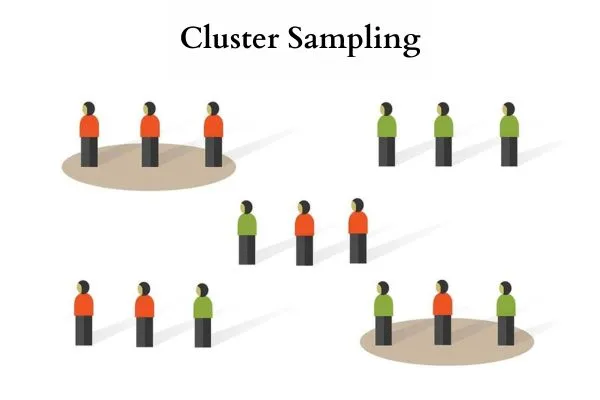
Convenience Sampling: Convenience sampling involves selecting actors based on their easy availability. This system is quick and accessible but may lead to a non-representative sample.
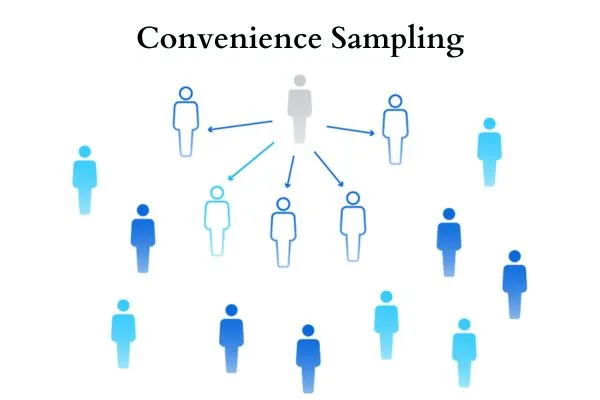
Methods of Fiber Sampling
There are many methods of fiber sampling. They are the squaring technique, The cut squaring technique, the Zoning Technique, the Tong sampling method, and many more. Here is given some description about it.
The Squaring Technique:
- The silver is opened out into a web and placed on a black velvet pad.
- The ending of the sliver is then squared off.
- A glass plate is positioned over the fibers to act as a control, and a small fringe is left projecting beyond the edge of the plate.
- All the protruding fibers are removed and discarded.
- The plate is forced back a little, and a second fringe is removed.
- Apparently, the extent baas have been avid since all the ends of fibers have terminated in a given volume.
- Repeat the operation until the final position of the plate edge was at least a distance equal to the length of the longest fiber present from its original position.
The Cut Squaring Method:
Where the material is composed of fibers in parallel order, e.g., sliver, roving, and yarn, a modified squaring technique may be used.
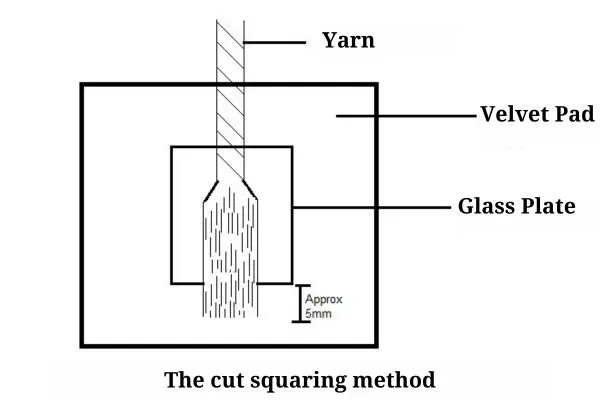
- The twisting material conditions are first untwisted, opened out a little, and laid parallel on a black velvet pad.
- A glass plate is set over the fibers with its leading edge at right angles to the strand axis.
- The fringe is cut across with scissors near the glass ends of the task.
- Plate as much as possible, and the fibers whose cut are removed forceps and discarded.
- The glass plate was moved back about 1mm, and the processing fringe was removed and discarded.
- This operation is repeated.
- Finally, after a third movement of the gas plate, the fringe is extracted and used as the sample.
- For wool tops and similar forms of material, it is suggested that the leading edge of the glass plate be put at an angle of almost 600 to the stand axis, and that cut should be made at a distance from the end greater than the length of the longest fiber present.
The Zoning Technique:
- A sample that weighs 2 oz.(roughly 906.72 gm) is drawn by opting about 80 large snowbanks from different corridors of the bulk.
- This sample is then divided into four parts.
- Sixteen small snowbanks are taken arbitrarily from individual parts ( roughly 20 mg).
- Each stack is halved four times and discarded alternatively by turning the stack through the correct angle among consecutive halving. Sixteen wisps are therefore produced from each part.
- These wisps are combined to form a stack.
- Each tuft is mixed by doubling and drawing between fritters.
- Each tuft is divided into four parts.
- A new tuft is attained by combining a part of the four snowbanks.
- The sample is remixed by doubling and drawing.
- A quarter of the sample is removed from each tuft to form the final sample.
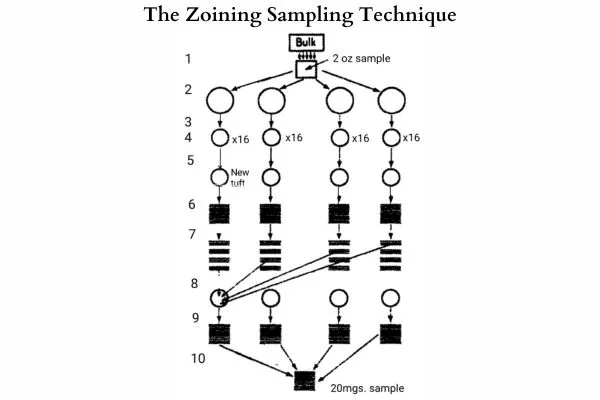
Tong Sampling Method:
- In the tong sampling method, an extent-biased sample is obtained. In effect, the grip of a pair of surgical tongs becomes equivalent to the line A in the figure.
- The material should be in a more or slight parallel order so slivers, roving, and yarns can be treated in this method.
- After opening out the material into a thin flat sheet, one pair of tongs is used to clamp about three groups of fibers at right angles to the fiber direction.
- The clamped fibers are removed from the rest of the material and carefully combed on one side of the tongs.
- After combing, a second pair of tongs clamp the fibers on the combed side of the sample, and care is taken to confirm that the limbs of both tongs are parallel to each other and in contact.
- The first pair of tongs is removed, and the uncombed fringe is combed. The completely combed sample is then transferred to a velvet pad ready for additional testing.
Yarn And Fiber Sampling Method
Yarn Sampling: Yarn is available as many independent packages, and the sampling problem is the section of a small number of such packages from the number. The population may be frames of ring bobbins, a skip of mule cops, a bundle of hanks, or a delivery of yarn on yarn on cones. A random sample is preferred, and for mill experiments and research, great care is taken to ensure that this type of sample is obtained.
Yarn Sampling Methods:
- Determination of count.
- Count of yarn removed from fabric.
- Twist in yarn in package form.
- Lea’s strength of spun yarns.
- Single thread tensile test.
Fiber Sampling Method:
- Generally, the region near the selvages often possesses slightly different properties to the body of the cloth.
- Therefore, fabric within 2 inches of the selvage should not be used.
- The reasons for this difference will be appreciated when one watches woven fabric; the extra strains on the yarns at the sis side of the cloth are usually noticed, and tempting will also have its effects.
- Number two samples should contain the same threads.
- In other words, as many of the component threads as possible should be represented in the samples.
- When weft strips are selected, it is suggested that some of the strips should include fabric woven from two weft packages. This is because the weft tension at the start of a fresh package may be much lower than the tension at the end of the old package, thereby giving rise to a change in the fabric structure and some variation in strength, an effect known as the “cop end effect.”
Conclusion
Textile testing is destructive, i.e., the equipment used for testing goes to waste after testing, so it isn’t desirable to test all of the material. As cloth products are always huge and bulk, it’s insolvable to test all the final affairs from a product process. therefore, only representative samples of the material are tested. slice also saves time and cost.
Reference: https://www.slideshare.net/226604125001/textile-testing-and-quality-control-238366668 https://textilelearner.net/sampling-techniques-of-fiber-yarn/
